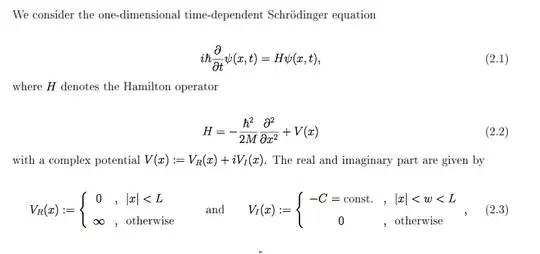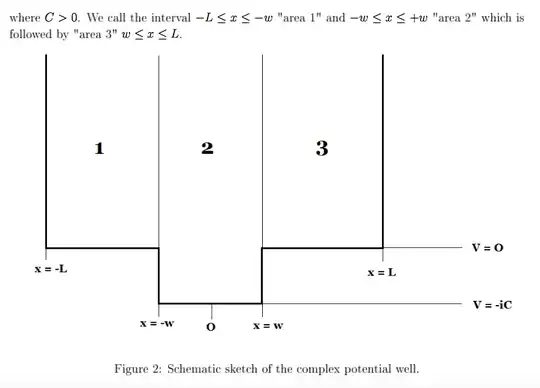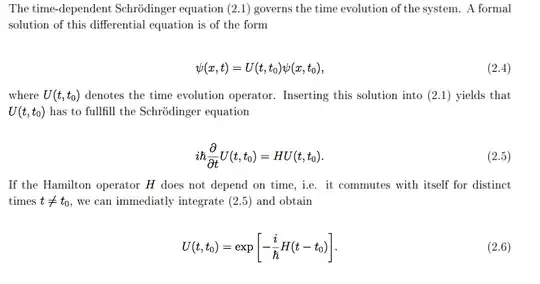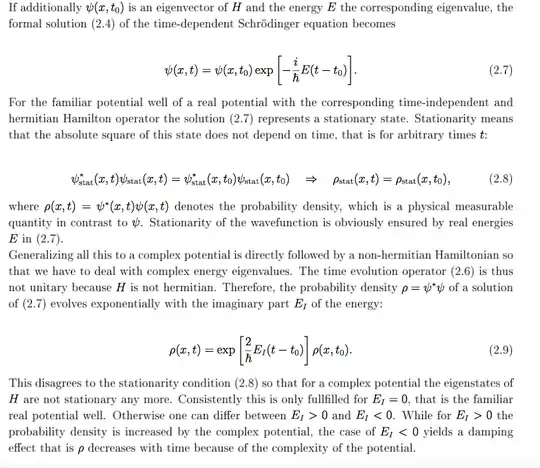If the external potential $V$ in the time-dependent Schroedinger equation doesn't depend on time, then we can separate the wavefunction as spatial part and time part.
$$ \Psi(x,t)=\psi(x) \theta(t) $$
$\psi(x)$ is the solution of well-known time-independent Schroedinger equation, and $\theta(t) = e^{-Et/\hbar}$. Then the probability density is time-independent, or stationary:
$$ \rho=|\Psi(x,t)|^{2} = |\psi(x)|^{2} $$
Thus, $ \frac{d}{dt} \int \rho d \tau =0 $.
However, introduce an imaginary potential $V(\vec{x})=V_{1}(\vec{x})+i V_{2}(\vec{x})$, where $V_{1}$ and $V_{2}$ are real function.
Then the time-dependent Schroedinger equation is
$$ i \hbar \frac{\partial}{\partial t}\Psi(\vec{x},t)= -\frac{\hbar^{2}}{2m} \nabla^{2} \Psi(\vec{x},t)+ \left\{V_{1}(\vec{x})+i V_{2}(\vec{x}) \right\}\Psi(x,t) $$
Let's calculate $ \frac{d}{dt} \int \rho d \tau $ at first.
$$ \begin{align*} \frac{d}{dt} \int \rho d \tau &= \frac{d}{dt} \int \Psi^{\ast}\Psi d \tau = \int \frac{\partial}{\partial t}(\Psi^{\ast} \Psi)d \tau \\ &=\int \left (\Psi^{\ast} \frac{\partial}{\partial t} \Psi + \Psi \frac{\partial}{\partial t} \Psi^{\ast} \right)d \tau\\ &= \int \frac{1}{2} \mathrm{Re} \left(\Psi^{\ast} \frac{\partial}{\partial t}\Psi \right) d \tau \end{align*} $$
From the given Schroedinger equation,
$$ \frac{1}{2} \mathrm{Re} \left(\Psi^{\ast} \frac{\partial}{\partial t} \Psi \right) =\frac{V_{2}(\vec{x})}{2 \hbar} \Psi^{\ast}\Psi $$
Thus,
$$ \frac{d}{dt} \int \rho d \tau = \frac{V_{2}(\vec{x})}{2 \hbar} \neq 0 $$
$V_{2}$ is generally not zero, meaning that the density isn't stationary.
This would violate the statement that the wavefunction is stationary if the external potential doesn't depend on time.
There no problem if the potential is real, but I guess imaginary potential has a kind of physical meaning. How can I think about this?



